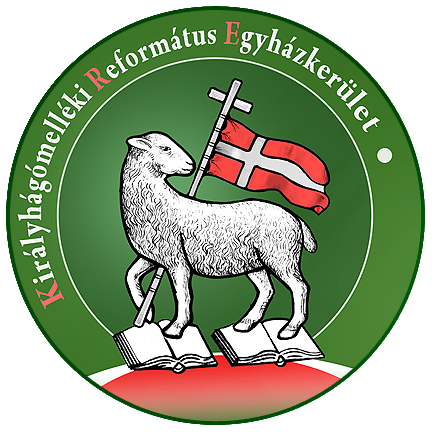Background to the Reformed Church in Romania

The history of the Reformed Church in Transylvania is closely connected to the history of the Reformed Church in Hungary. The organised reformation of the Church in Transylvania started after the fall of the united Hungarian Kingdom as a result of the Mohács Disaster (1526). According to the chronicles Sánta Márton Kálmáncsehi was the first who in 1536 started spreading Calvin’s doctrines.
After the fall of the Hungarian capital Buda, occupied by the Turks, Transylvania became an independent principality. Its first Reigning Prince, Zsigmond János (1540-1571), had already, by 1563, became a pre-eminent follower and protector of the Lutheran movement, and later of the Helvetic and finally of the Antitrinitarian movements.
Transylvania’s unique political situation required collaboration against the Turkish threat and the exclusivity of Habsburg religious policy. The followers of different Reformed movements recognised very early the necessity of a common stance in this regard. The Hungarian Reformed Reigning Princes of Transylvania sought to promote, by legally-based guarantees, the establishment of peaceful coexistence between the Roman Catholic and the Reformed Churches.

The Synod of Nagyenyed in 1564 is considered the official foundation of the Reformed Church in Transylvania. Four years later, the Religious Peace of Torda (1568) recognised as free and accepted religions (lat. recepta religio) the Roman Catholic, Helvetic Reformed, Lutheran Evangelical and Antitrinitarian Unitarian Churches; a unique event in the world at that time.
The Reformed District in Transylvania’s first bishop was Ferenc Dávid (1564), who was later to found the Unitarian Church.
In 1604 the Reformed Prince István Bocskai declared war on the Habsburg Empire in defence of freedom of worship. He finished by obtaining international recognition of Transylvania’s autonomy and of the rights of the Protestants. He also secured the Eastern Parts (lat. Partium) of historical Hungary, which he annexed to the historical land of Transylvania. This is the existing region of the Királyhágómellék Reformed District.
Our Reformed Church had its heyday under the Reformed Reigning Princes of Transylvania in the first half of the 17th century. Gábor Bethlen (1613-1629) founded the Reformed Academicum Collegium in Transylvania in 1622, György Rákóczy I. established the Reformed College in Nagyvárad/Oradea. Both united Transylvania and Partium under their reign, fought in the 30 year war and secured the recognition of Transylvania’s sovereignty (included in the Peace Treaty of Westphalia - 1648) and freedom of worship on its territory.
In the 18th century Transylvania was incorporated into the Habsburg Empire, resulting in a ferocious recatholization policy from the Empire’s side. Despite this, the Reformed Church was able to maintain its integrity and to defend the spiritual identity of its believers.
In the middle of the 19th century the Reformed Church identified itself with the struggle for liberation from the Habsburg Empire, hoping for a new Christian and democratic order. In 1867 Transylvania became part of Hungary. The present Királyhágómellék Reformed District belonged to Debrecen Tiszántúli Reformed District since the beginnings of autonomous Transylvanian principality.

A new period began with the end of the 1st World War, when Transylvania, as well as Partium were annexed to Romania by virtue of the Trianon Peace Treaty in 1920. Besides the Transylvanian Reformed Church District there was established the Királyhágómellék Reformed Church District. It included 183 seceded parish churches and its headquarters were in Nagyvárad/Oradea. István Sulyok, Dean of Bihar was elected as its first bishop.
The new Romanian state did not recognise the formation of the Királyhágómellék Reformed Church District. Though the Bishop of the Transylvanian Reformed Church District, Károly Nagy swore allegiance to the Romanian state, several illegal measures were taken against the Reformed Church and other minority churches, between the two Wars.

István Sulyok, bishop of Nagyvárad/Oradea (1921-1944) and Károly Nagy, bishop of Kolozsvár/Cluj fought a hard struggle against assimilative and discriminative Romanian policy. The state put the mere existence of the Reformed Church in Romania in jeopardy and endangered the religious and national identity of its believers. The most hurtful blow to our Church was that the nationalistic Romanian state illegally appropriated the real property of our churches and abandoned the developed structure of denominational education. Romania failed to respect its obligations regarding minorities assumed under the peace treaty or pursuant to other documents.
After the Treaty of Trianon, these two Reformed Church districts were organised on a countrywide synodical model. Since then, the Reformed Theological Academy in Kolozsvár/Cluj has undertaken the instruction of ministers.
Despite the heavy oppression or maybe in fact because of the necessity of its self-defence against the forces of nationalism which sought to obliterate it, the Reformed Church in Romania underwent a spiritual renewal in the period between the two World Wars.
Following the Decision of Vienna of 1940, the biggest part of the Királyhágómellék Reformed Church District came under the authority of Hungary, as well as the main part of the Transylvanian Reformed Church District. After the 2nd World War, following the reattachment to Romania of these territories, our Church was re-established under the name of Nagyváradi Reformed Church District, while the Transylvanian District got the name of Kolozsvár District. The elected bishop, Béla Csernák was not officially recognised by the Romanian Government.
The communist take-over of 1948 meant the beginning of the persecution of our Church in modern history. In 1948 all the property of our Church was nationalised. In 1952 and in greater numbers after 1956, several Reformed and other minority ministers were arrested. The epoch of atheistic party ideology and dictatorship began. The communist state power forced the leadership of churches to collaborate and totally controlled religious life.




